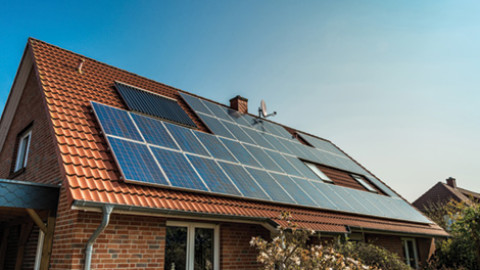Dr Mohsen Khorasany, Research Fellow, Monash University
Recent technology advances and the increasing uptake of distributed energy resources in Australia have provided an opportunity to reform the National Electricity Market (NEM) as a two-sided market, as highlighted in a recent paper by the Council of Australian Governments (COAG) Energy Council.
Electricity networks were originally designed, assuming one-sided power flow from large-scale generators to consumers at the edges of the distribution system. Correspondingly, the market was designed by placing a greater emphasis on the supply side to be dispatched to meet the demand. However, advances in technology aligned with rapid growth in the customer adoption of distributed energy resources are forming a decentralised environment, where a lot of small-scale generation units are connected to the distribution grid, resulting in bidirectional power flows.
Given the pace and complexity of changes in the electricity networks, there is a need to change the top-down market structure to a flexible market that can adapt swiftly and effectively as the power system evolves. A two-sided market favours this turn by forming a market that allows active participation from both the supply and demand sides.
The need for change
An increasing number of customers in electricity markets are seeking to mitigate rising electricity prices and to reduce their greenhouse gas emissions by deploying their own on-site renewable generation and storage. The current trend in Australia’s energy sector is a rapid increase in the integration of renewable energy and distributed resources as a path to decarbonisation and decentralisation of energy. Australia’s power system already has 17 gigawatts of wind and solar capacity installed, and more than 2.1 million installed rooftop PV systems, making up 21.6 per cent of grid installed capacity. Local penetration in some areas is well above 30 per cent of all customer premises. It is expected that by 2050, more than half of all houses will have solar PV systems, and about a third of residential buildings will have energy storage.
The growth in the customer acceptance and adoption of renewables and distributed resources is a double-edged sword. It provides customers with the opportunity to reduce their electricity bills and cut carbon emissions. However, it raises operational and market challenges, since the grid infrastructure is designed to deliver large-scale centralised generation to consumers rather than to integrate millions of consumers owned generators. Hence, innovative and scalable solutions are required to effectively accommodate more renewable energy resources.
The combination of the increasing uptake of distributed energy resources, changes in the nature of consumers, and increase in utilising digital technologies provides the opportunity to transition to a two-sided market that effectively integrates both demand and supply sides in the market to manage system reliability and security issues while also improving market efficiency.
Why a two-sided market?
The two-sided electricity market enables energy customers to respond to the price based on their actual cost preferences. Forming a market by quantity and price inputs from both the demand and supply sides of the electricity enables more effective participation in the market by even small consumers like homes and small businesses. The most important benefit of the two-sided market for the network operators is that they can determine more accurate demand forecasts for their network.
Through active participation in the two-sided market, end-users will provide information about their intention to consume or supply energy, and this information would help network operators in the optimisation of network assets with increasing levels of distributed energy resources. Also, active participation of customers assists the market operator with maintaining the safe, secure and reliable operation of the power system with less operational interventions. The transition to a two-sided market provides opportunities to improve energy efficiency through electricity market reformation. However, this transition does have security and reliability challenges which will need to be considered in the market design.
How can the Monash Microgrid help?
Indeed, the development of the two-sided market design for the NEM will benefit from the outcomes of current trials and projects with the focus on the grid transformation. The Indra Monash Smart City project, as a prototype of a local two-sided market for microgrids, can provide valuable learnings about the market design and challenges associated with the transition to a two-sided market.The Transactive Energy Market (TEM), implemented in the Monash Microgrid, is an exemplar to demonstrate how a two-sided market can manage and orchestrate the energy generation, storage and two-way power flows in the microgrid, including the interface with the broader electricity network. The energy management of local resources and the microgrid as a whole is achieved through a complete hardware and software foundation, that provides the required functionalities for establishing a local market.
The local market in the microgrid offers a two-sided market model that enables both the demand and supply to actively negotiate the exchange of energy and allows to maximise the utilisation of distributed resources and coordinates them to provide different services. It enables all market participants to respond to price signals based on their cost and value preferences, which in turn improves the matching of the supply and demand across the microgrid.
While the Monash Microgrid can provide essential learnings for the development of a two-sided market, determining the transitional pathway for such a market will require consideration of several key design elements. Indeed, evaluation of all projects and trials relevant to the two-sided market will help to achieve a coherent and efficient market design that incorporates all design elements.
Dr Mohsen Khorasany is a Research Fellow in the Department of Electrical and Computer Systems Engineering. Dr Khorasany’s research is focused on market design for distributed energy resources, including local energy trading in a microgrid, P2P trading, market-clearing mechanisms, distributed optimisation, and energy pricing mechanisms. Currently, he is working on the Net Zero project at Monash University to develop a transactive energy market for the Monash Microgrid.

















